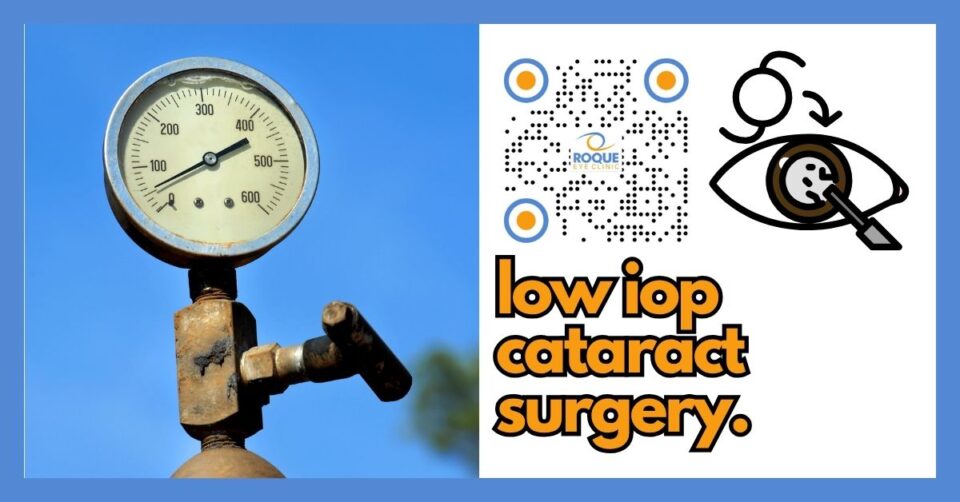Smoking and Cataract — How Cigarettes Cloud Your Vision (and How to Clear It)
Key Learning Points
-
Current smokers are up to 4 times more likely to develop cataracts, especially the vision‑blurring nuclear type.
-
The sooner you quit, the faster the excess risk falls—dropping by about one‑third within 10 years.
-
Cataracts are curable with a 15‑minute outpatient operation, but avoiding or stopping smoking delays the need for surgery and improves outcomes.
-
Simple daily habits—UV‑blocking sunglasses, a plant‑rich diet, and regular eye checks—add extra protection.
-
Understanding smoking’s lens‑clouding chemistry empowers patients to make sight‑saving lifestyle choices.
Smoking and Cataract: A Comprehensive Guide for Patients
Introduction
Imagine looking through a camera whose lens is slowly fogging up; colors fade, glare blooms around headlights, and reading becomes a chore. That clouded camera lens is the perfect analogy for a cataract—and cigarette smoke is one of the fastest ways to steam it up. In the Philippines alone, cataract is the leading cause of reversible blindness, and smoking remains common. This article explains—in plain English—how tobacco accelerates cataract, how to spot symptoms early, modern treatment options, and, most importantly, what you can do today to clear the smoke and safeguard your vision.
1. What Is a Cataract?
A cataract is a clouding of the eye’s natural lens, which normally focuses light sharply onto the retina. Proteins inside the lens clump together over time, scattering light and blurring images. While aging is the main driver, smoking, diabetes, and UV exposure shift the timeline forward by years—sometimes decades.
Types of Cataract
-
Nuclear sclerotic – the classic “yellow‑brown” core haze most linked to cigarettes.
-
Cortical – spoke‑like opacities from the lens edge inward.
-
Posterior subcapsular – a back‑of‑lens film, common in steroid use or diabetes. Smoking increases risk for all three but hits nuclear cataract hardest.
2. How Does Smoking Cause Cataracts?
-
Oxidative Stress: Each puff releases free radicals that overwhelm the lens’s antioxidant defenses, damaging its crystalline proteins.
-
Direct Toxin Deposition: Cadmium and hydroquinone in cigarette smoke accumulate in lens tissue, altering its structure.
-
Microvascular Changes: Smoking constricts the tiny vessels that nourish the lens, starving it of oxygen and nutrients.
-
Inflammation: Chronic systemic inflammation accelerates protein glycation and aggregation.
Meta‑analyses show dose–response: the risk climbs with every pack‑year smoked and drops only gradually after quitting.
3. Symptoms to Watch For
| Early Signs | Everyday Impact | Why Smokers Notice Sooner |
|---|---|---|
| Blurred, hazy, or “dirty glasses” vision | Reading small print becomes tiring | Nuclear cataract densifies faster |
| Increased glare or halos around lights | Night driving feels dangerous | Smoke toxins yellow the lens, scattering light |
| Fading or yellowing of colors | Blues and greens look dull | Tar pigments stain lens proteins |
| Frequent glasses prescription changes | Stronger lenses give limited relief | Clouding, not refraction, is the culprit |
If you smoke and recognize these clues, schedule an ophthalmic exam promptly.
4. How Common Is Smoking‑Related Cataract?
-
Current smokers: ~4 × risk of any cataract; up to 3 × for nuclear subtype.
-
Former smokers (<10 yrs quit): risk falls by ≈ 33 %.
-
Second‑hand smoke exposure: elevated risk in children and non‑smoking adults.
Globally, researchers estimate that nearly 1 in 5 cataract surgeries could be avoided if nobody smoked.
5. Diagnosis: What to Expect at Your Eye Visit
-
Visual Acuity Test: Read letters on a chart to gauge clarity.
-
Slit‑Lamp Examination: A microscope lets your ophthalmologist view lens opacities directly.
-
Dilated Fundus Exam: Essential to rule out other smoke‑linked problems (e.g., macular degeneration).
-
Cycloplegic Refraction: Important for accurate measurements, especially before cataract surgery.
Each test is quick and painless; early detection means more time to quit smoking before surgery is needed.
6. Treatment Options
6.1 Lifestyle First
Quitting smoking won’t reverse an existing cataract, but it slows progression, makes surgery safer, and protects the other eye. Pair a quit plan with UV‑blocking sunglasses, balanced diet, and diabetes control.
6.2 Cataract Surgery
When vision interferes with driving, work, or favorite hobbies, surgery is the gold standard. The cloudy lens is removed and replaced with a clear intraocular lens (IOL). Modern phacoemulsification or femtosecond laser techniques take about 15 minutes under eyedrop anesthesia.
Smokers’ Special Considerations
-
Slower Healing: Nicotine reduces blood flow; strict smoke‑free periods before and after surgery are advised.
-
Higher Risk of Capsular Haze: Your surgeon may adjust anti‑inflammatory drops accordingly.
-
Increased AMD Risk: Smokers already have higher age‑related macular degeneration risk; target IOL selection may aim to maximize blue‑light filtering.
Outcomes remain excellent when patients quit or at least pause smoking perioperatively.
7. Recovery & Self‑Care After Surgery
Day 0–1: Rest, use antibiotic and steroid drops as prescribed, no eye‑rubbing.
Week 1: Shield at night, avoid smoke and dusty areas.
Week 2–4: Light exercise OK; resume reading/computer; still no smoking—nicotine delays wound sealing.
Month 2: Final refraction; consider UV‑blocking sunglasses full‑time.
Think of your healing eye like a freshly waxed car—keep pollutants away until the surface is rock‑solid.
8. Analogy: The Foggy Windshield
Picture driving through Taguig at night. A clean windshield reveals every traffic light; a smoke‑film‑covered one scatters incoming beams, blinding you with glare. Your lens behaves the same way—tar and toxins from cigarettes lay an invisible film that thickens over time. Cleaning the windshield (quitting) prevents further fogging; changing the windshield entirely (surgery) restores crystal clarity.
9. Prevention Checklist
☑ Quit smoking (ask your GP about nicotine replacement or local quit lines).
☑ Wear UV‑blocking sunglasses (UV 400).
☑ Eat leafy greens, citrus, and omega‑3‑rich fish.
☑ Control diabetes, blood pressure.
☑ Schedule an eye exam every 1‑2 years after age 40—or sooner if you smoke.
10. Frequently Asked Questions
| # | Question | Short Answer |
|---|---|---|
| 1 | Does every smoker get cataracts? | Not everyone, but risk is several‑fold higher and appears earlier. |
| 2 | If I quit, will my cataract go away? | Existing clouding stays, but quitting slows worsening and boosts surgery safety. |
| 3 | How long after quitting does risk fall? | About one‑third lower within 10 years; further decline over decades. |
| 4 | Can vaping cause cataracts? | Data are emerging; nicotine and oxidative stress suggest similar risks—better to stay smoke‑free. |
| 5 | Do vitamins prevent cataracts? | Antioxidant‑rich diets help but cannot offset heavy smoking damage. |
| 6 | Is cataract surgery painful? | No; numbing drops prevent pain. Vision clears within days. |
| 7 | Will I still need glasses after surgery? | Many choose multifocal or EDOF IOLs for less dependence; discuss options with your surgeon. |
| 8 | Can I smoke right after surgery? | Strongly discouraged; smoke slows healing and increases infection risk. |
| 9 | Are second‑hand smoke risks real? | Yes—children of smokers show measurable eye damage. |
| 10 | Does insurance cover cataract surgery? | In the Philippines, PhilHealth and many HMOs cover standard IOL surgery; premium lenses may cost extra. |
11. Take‑Home Message
Cigarettes don’t just threaten your heart and lungs—they quietly cloud the lenses that let you see loved ones’ faces and Manila’s sunsets. The single most powerful step to keep your world bright is to quit smoking today. If cataract has already set in, modern surgery restores clear sight, and staying smoke‑free ensures the best, longest‑lasting results.
12. Bibliography
List 1 — Epidemiology
-
Ye J, He J, Wang C, Wu H, Shi X, Zhang H. Smoking and risk of age‑related cataract: A meta‑analysis. Invest Ophthalmol Vis Sci. 2012;53(7):3885‑3895.
-
Luo L, Li JQ, Zhang Y, Lv W, et al. Risk of cataract in smokers: A meta‑analysis of observational studies. Int J Ophthalmol. 2019;12(3):429‑437.
-
Kelly SP, Thornton J, Edwards R, Sahu A, Harrison R. Smoking and cataract: review of causal association. J Cataract Refract Surg. 2005;31(12):2395‑2404.
List 2 — Pathophysiology
-
Marcantonio JM, Vrensen GF. Cell and molecular biology of lens aging, cataract and cigarette smoke. Prog Retin Eye Res. 2020;79:100843.
-
Beebe DC, Holekamp NM, Shui YB. Oxidative damage and the prevention of age‑related cataract. Prog Retin Eye Res. 2011;30(6):380‑392.
-
Vinson JA. Oxidative stress in cataracts. Clin Chem. 2006;52(5):776‑777.
List 3 — Smoking Cessation Effects
-
Tan JS, Wang JJ, Mitchell P. Influence of smoking and alcohol on cataract surgery risk. Acta Ophthalmol Scand. 2003;81(5):508‑512.
-
Lindblad BE, Hakansson N, Philipson B, Wolk A. Cessation of smoking and long‑term risk of cataract: A population‑based study. JAMA Ophthalmol. 2014;132(3):253‑257.
-
Hyman L, Klein BE, Klein R, et al. Cigarette smoking and risk of nuclear cataracts. Arch Ophthalmol. 1991;109(6):993‑998.
List 4 — Surgical Outcomes
-
Heckert KK, Nolan S, Rao RC, et al. Impact of smoking on visual outcomes after cataract surgery: A systematic review. Ophthalmology. 2024;131(2):95‑104.
-
Fernández‑Pérez C, León‑Segui J, Pastor‑Barriuso R. Smoking status and posterior capsular opacification risk: Meta‑analysis. Eye (Lond). 2023;37(1):49‑57.
-
Patel PS, Ayalew Y, Lim NR. Pre‑operative smoking cessation and cataract surgery complications. BMC Ophthalmol. 2022;22(1):311.
List 5 — Public Health & Patient Education
-
National Eye Institute. Cataract—What You Should Know. 2023 update.
-
American Academy of Ophthalmology. Smokers: How Smoking & Vaping Damage the Eyes. 2025.
-
World Health Organization. Tobacco and Eye Health: Policy Brief. 2024.
BOOK AN APPOINTMENT
It takes less than 5 minutes to complete your online booking. Alternatively, you may call our BGC Clinic, or our Alabang Clinic for assistance.





